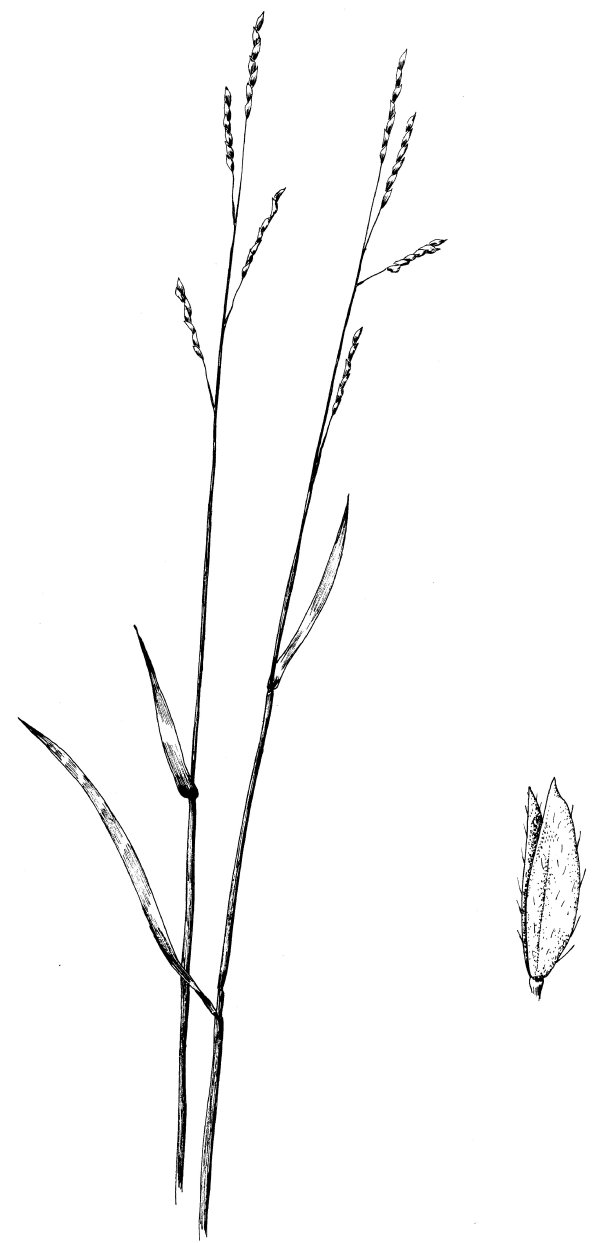
Leersia virginica Willd. Whitegrass Habit: Perennial, with clusters of very scaly rhizomes much stouter than the culm base. Culms: Slender, weak, 30-120 cm. tall, much branched, straggling, the nodes conspicuous, pubescent. Blades: Leaf-blades 5-15 cm. long, 2-15 mm. wide, flat, narrowed towards the base, thin, scabrous. Sheaths: Mostly shorter than the internodes, flattened, smooth to rough. Ligule: Membranous, about 2 mm. long. Inflorescence: Terminal panicles open, 10-20 cm. long, with stiff spreading capillary branches, the axillary panicles more or less included and cleistogamous. Spikelets: Flat, 2.5-3 mm. long, 1 mm. wide, closely appressed, 1-flowered, disarticulating from the pedicels, perfect, but those in the open panicles usually sterile, those enclosed in the sheaths cleistogamous and fruitful. Glumes: Wanting. Lemmas: Hispid at least on the keel and margins, boatshaped, curving to one side, becoming concave next to the axis to which it is appressed, awnless, clasping the palea by a pair of strong marginal nerves. Palea: Hispid on the keel, much narrower, 1-nerved. Stamens: 2. Fruit: Grain. Habitat: Swamps, stream banks, low woods, and moist places. August-September. Kansas Range: East three fourths. Use: Often planted around fish ponds.